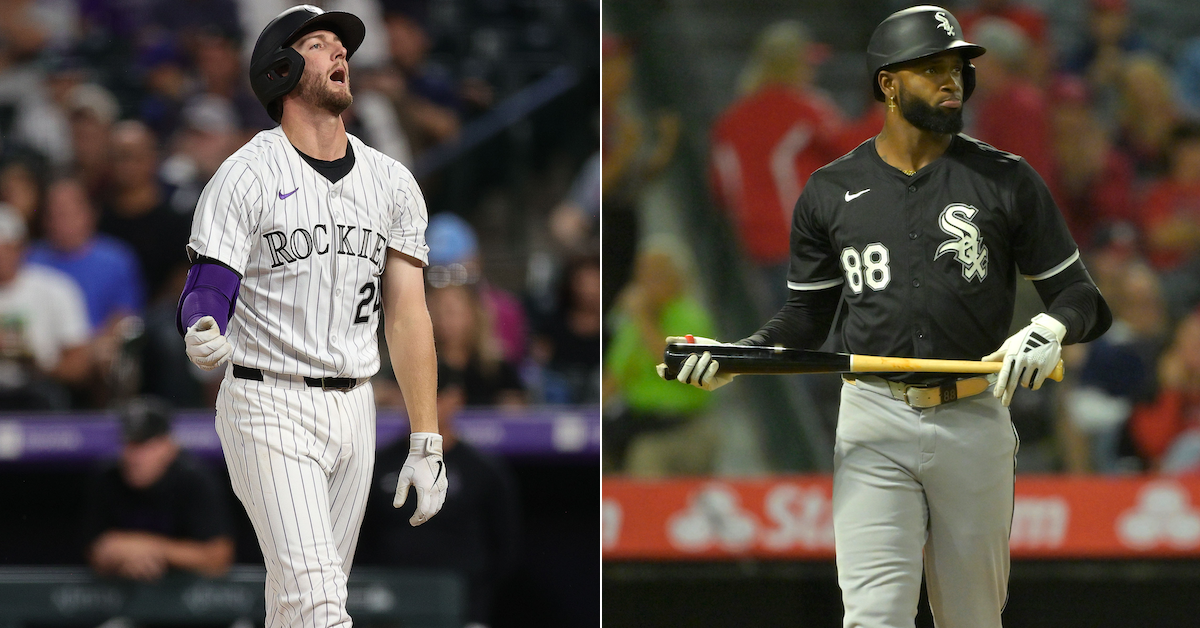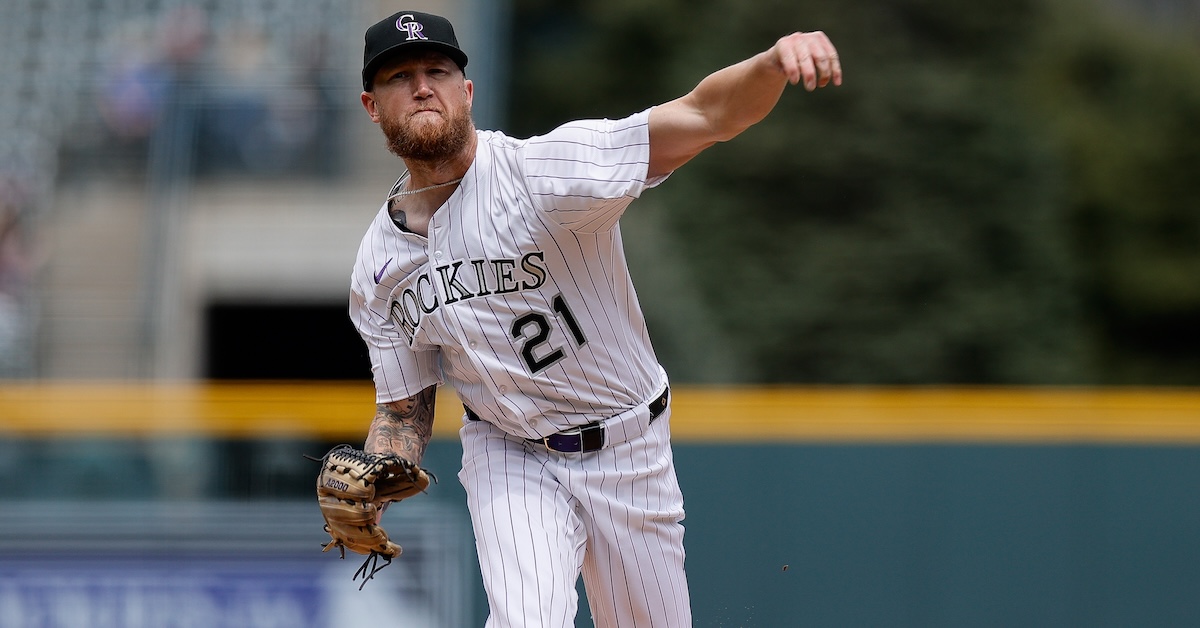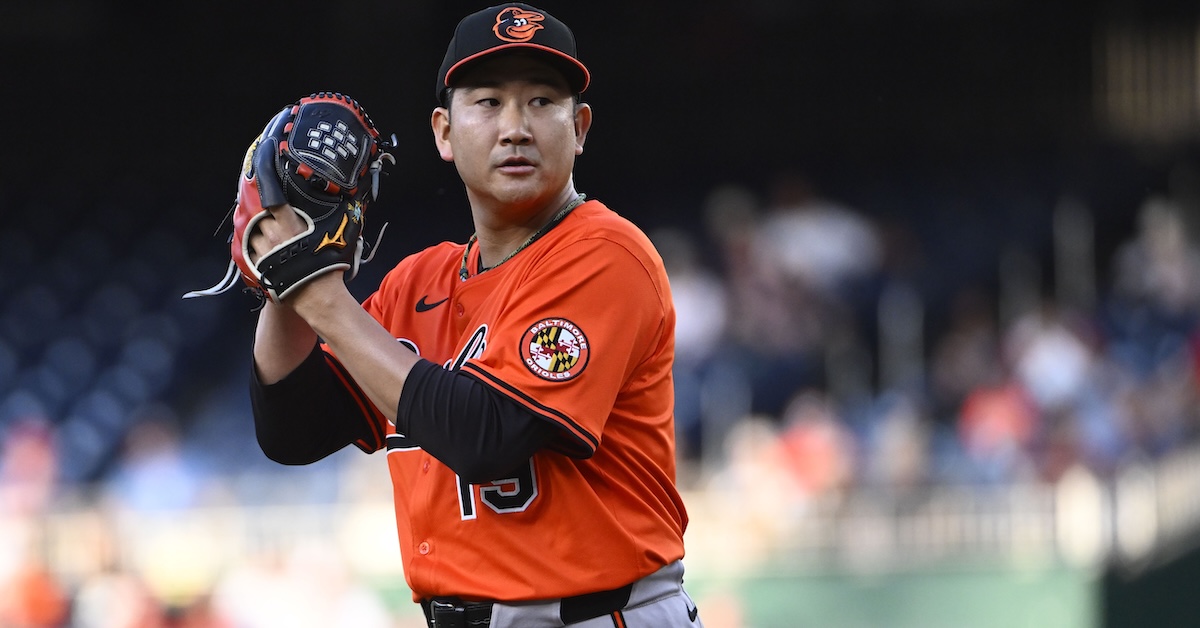FanGraphs Power Rankings: April 21–27

The unpredictable nature of the early season has reared it’s head. You might have been able to guess that the Mets would have the best record in baseball after a month, but I doubt many would have foreseen the Tigers holding the AL’s best record entering the final week of April.
Last year, we revamped our power rankings using a modified Elo rating system. If you’re familiar with chess rankings or FiveThirtyEight’s defunct sports section, you’ll know that Elo is an elegant solution that measures teams’ relative strength and is very reactive to recent performance. To avoid overweighting recent results during the season, we weigh each team’s raw Elo rank using our coin flip playoff odds (specifically, we regress the playoff odds by 50% and weigh those against the raw Elo ranking, increasing in weight as the season progresses to a maximum of 25%). The weighted Elo ranks are then displayed as “Power Score” in the tables below. As the best and worst teams sort themselves out throughout the season, they’ll filter to the top and bottom of the rankings, while the exercise will remain reactive to hot streaks or cold snaps.
First up are the full rankings, presented in a sortable table. Below that, I’ve grouped the teams into tiers with comments on a handful of clubs. You’ll notice that the official ordinal rankings don’t always match the tiers — there are times where I take editorial liberties when grouping teams together — but generally, the ordering is consistent. One thing to note: The playoff odds listed in the tables below are our standard Depth Charts odds, not the coin flip odds that are used in the ranking formula.
| Rank | Team | Record | Elo | Opponent Elo | Playoff Odds | Power Score | Δ |
|---|---|---|---|---|---|---|---|
| 1 | Dodgers | 18-10 | 1595 | 1503 | 96.5% | 1593 | 0 |
| 2 | Mets | 19-9 | 1567 | 1482 | 84.8% | 1568 | 0 |
| 3 | Cubs | 17-12 | 1563 | 1555 | 65.4% | 1561 | 2 |
| 4 | Tigers | 18-10 | 1556 | 1499 | 80.6% | 1558 | 7 |
| 5 | Giants | 19-10 | 1551 | 1507 | 59.4% | 1552 | 5 |
| 6 | Yankees | 17-11 | 1551 | 1503 | 83.8% | 1551 | -2 |
| 7 | Mariners | 16-12 | 1545 | 1505 | 72.8% | 1544 | 2 |
| 8 | Braves | 12-15 | 1543 | 1517 | 68.2% | 1537 | 4 |
| 9 | Phillies | 15-13 | 1535 | 1512 | 62.5% | 1532 | -3 |
| 10 | Padres | 17-11 | 1524 | 1503 | 41.1% | 1525 | -7 |
| 11 | Diamondbacks | 15-13 | 1526 | 1502 | 58.8% | 1523 | -4 |
| 12 | Rangers | 15-13 | 1523 | 1517 | 52.5% | 1522 | -4 |
| 13 | Astros | 14-13 | 1524 | 1508 | 53.0% | 1521 | 1 |
| 14 | Red Sox | 16-14 | 1515 | 1476 | 59.5% | 1513 | 2 |
| 15 | Rays | 14-14 | 1513 | 1508 | 31.5% | 1510 | 6 |
| 16 | Guardians | 15-12 | 1504 | 1487 | 31.8% | 1504 | 1 |
| 17 | Reds | 15-13 | 1498 | 1482 | 17.8% | 1497 | 1 |
| 18 | Royals | 14-15 | 1496 | 1488 | 29.7% | 1493 | 4 |
| 19 | Blue Jays | 13-15 | 1493 | 1515 | 29.8% | 1490 | -6 |
| 20 | Brewers | 14-15 | 1489 | 1490 | 26.0% | 1485 | -5 |
| 21 | Twins | 12-16 | 1487 | 1479 | 40.3% | 1483 | 4 |
| 22 | Athletics | 14-14 | 1477 | 1476 | 16.3% | 1476 | 2 |
| 23 | Cardinals | 12-16 | 1474 | 1513 | 12.0% | 1470 | 0 |
| 24 | Nationals | 13-15 | 1463 | 1501 | 1.7% | 1460 | 4 |
| 25 | Orioles | 10-17 | 1463 | 1501 | 15.2% | 1458 | -6 |
| 26 | Angels | 12-15 | 1449 | 1483 | 3.3% | 1447 | -6 |
| 27 | Marlins | 12-15 | 1449 | 1516 | 1.0% | 1446 | -1 |
| 28 | Pirates | 11-18 | 1450 | 1491 | 4.9% | 1445 | -1 |
| 29 | White Sox | 7-21 | 1350 | 1486 | 0.0% | 1347 | 1 |
| 30 | Rockies | 4-23 | 1327 | 1509 | 0.0% | 1324 | -1 |
…
| Team | Record | Elo | Opponent Elo | Playoff Odds | Power Score |
|---|---|---|---|---|---|
| Dodgers | 18-10 | 1595 | 1503 | 96.5% | 1593 |
Tyler Glasnow made an early exit from his start on Sunday after experiencing some shoulder discomfort. That leaves the Dodgers with three healthy starters and a lot of questions about how they’re going to fill out their rotation. Tony Gonsolin is on track to be activated from the IL to make his season debut this week, but it’s still troubling how quickly Los Angeles burned through its pitching depth.
| Team | Record | Elo | Opponent Elo | Playoff Odds | Power Score |
|---|---|---|---|---|---|
| Mets | 19-9 | 1567 | 1482 | 84.8% | 1568 |
| Cubs | 17-12 | 1563 | 1555 | 65.4% | 1561 |
| Tigers | 18-10 | 1556 | 1499 | 80.6% | 1558 |
The Mets completed a perfect seven-game homestand last week that culminated on Wednesday with a walk-off victory to seal a sweep over the Phillies. Jeff McNeil and Francisco Alvarez were activated off the IL on Friday, and the young catcher blasted his first home run of the season in Saturday’s 2-0 win. New York currently owns the best record in baseball, but the team had some trouble handling the Nationals over the weekend, coughing up two late leads on Friday and Sunday.
The growth of Pete Crow-Armstrong at the plate to go along with his elite defense and baserunning has been a huge difference maker for the Cubs. He nearly singlehandedly won a two-game set against the Dodgers last week, collecting six hits, two home runs, and two stolen bases. His evolution is one of many reasons why the Cubs have the best offense in baseball through the first month of the season.
The Tigers won their third straight series with a sweep of the Orioles as the exclamation point over the weekend. They’re currently the best team in the American League thanks to a pitching staff that’s allowed the fewest runs in the league. Unlike last year’s surprising playoff club, Detroit’s starting rotation has been a strength, posting the second lowest park- and league-adjusted ERA in baseball. Tarik Skubal has obviously been the headliner, but the Tigers have gotten strong contributions from all five starters this season.
| Team | Record | Elo | Opponent Elo | Playoff Odds | Power Score |
|---|---|---|---|---|---|
| Giants | 19-10 | 1551 | 1507 | 59.4% | 1552 |
| Yankees | 17-11 | 1551 | 1503 | 83.8% | 1551 |
| Mariners | 16-12 | 1545 | 1505 | 72.8% | 1544 |
| Braves | 12-15 | 1543 | 1517 | 68.2% | 1537 |
| Phillies | 15-13 | 1535 | 1512 | 62.5% | 1532 |
The Yankees salvaged what had been a rough week with a doubleheader sweep of the Blue Jays on Sunday. With those two victories, they maintained their two-game lead over the Red Sox in the AL East. Aaron Judge has been hitting at an all-time-great pace, even as he has only two home runs over the last two weeks. He enters this week with a .406/.500/.717 slash line, eight home runs, a 247 wRC+, and 2.7 WAR. Unlike some recent seasons, Judge is far from the only offensive force in the lineup; Cody Bellinger is the only Yankee with at least 50 plate appearance and a wRC+ below 100. That high-powered offense has covered up some bullpen woes. Devin Williams has had a rough start to his Yankees tenure; another blown save on Friday shot his ERA up to 11.25, and he’s been removed from the closer role until he can get things back on track.
The Mariners may have dodged a bullet on Friday, when Logan Gilbert was removed from his start after pitching just three innings. He was diagnosed with a Grade 1 flexor strain rather than anything more serious. As it is, he’ll join George Kirby on the IL, and suddenly Seattle’s stellar starting rotation looks a lot thinner than it has in a long time. Thankfully, the bats have stepped up. With a 126 wRC+, the Mariners currently boast the second-best offense in baseball, and Cal Raleigh and his major league-leading 10 home runs are a big reason why.
Don’t look now, but the Braves have won three straight series and seven of their last nine games, putting them just three games under .500. It’s been quite a turnaround from their 0-7 start, though they’re not out of the woods yet. After making just one start this season, Spencer Strider returned to the IL last week with a hamstring strain. It should be about a month before Atlanta welcomes back both the ace and Ronald Acuña Jr., who is ramping up but has yet to begin a rehab assignment.
The Phillies snapped a five-game losing streak with a win on Saturday over the Cubs and backed it up with an extra-innings victory on Sunday night. There’s considerable daylight between them and the Mets atop the NL East — four games is the largest division lead in baseball — though it’s far too early to panic in Philadelphia. Encouragingly, Aaron Nola spun a seven-inning gem in his start on Sunday to snap out of his early-season funk.
| Team | Record | Elo | Opponent Elo | Playoff Odds | Power Score |
|---|---|---|---|---|---|
| Padres | 17-11 | 1524 | 1503 | 41.1% | 1525 |
| Diamondbacks | 15-13 | 1526 | 1502 | 58.8% | 1523 |
| Rangers | 15-13 | 1523 | 1517 | 52.5% | 1522 |
| Astros | 14-13 | 1524 | 1508 | 53.0% | 1521 |
| Red Sox | 16-14 | 1515 | 1476 | 59.5% | 1513 |
The Rangers dropped their third straight series over the weekend in ugly fashion, losing Sunday’s rubber match with the Giants when Heliot Ramos led off the ninth and hit a walk-off dribbler back to the pitcher, courtesy of two throwing errors. It was their third walk-off loss of the week. Their vaunted offense has scored the fewest runs per game in the majors this season. The scorching starts of Wyatt Langford (215 wRC+) and Josh Smith (148) have been offset by the woes of Jake Burger (46 wRC+), Marcus Semien (25), and Joc Pederson (13). Making matters worse, Corey Seager (133 wRC+) landed on the IL last week with a right hamstring strain, though he’s not expected to miss much more time than the minimum 10 days.
| Team | Record | Elo | Opponent Elo | Playoff Odds | Power Score |
|---|---|---|---|---|---|
| Rays | 14-14 | 1513 | 1508 | 31.5% | 1510 |
| Guardians | 15-12 | 1504 | 1487 | 31.8% | 1504 |
| Reds | 15-13 | 1498 | 1482 | 17.8% | 1497 |
| Royals | 14-15 | 1496 | 1488 | 29.7% | 1493 |
| Blue Jays | 13-15 | 1493 | 1515 | 29.8% | 1490 |
| Brewers | 14-15 | 1489 | 1490 | 26.0% | 1485 |
The Rays bounced back nicely last week, winning a series in Arizona before sweeping the Padres in San Diego. Both of their victories against the Diamondbacks came in extra innings, and the pitching staff held the Friars to just three runs in three games. Maybe getting out of Tampa was exactly what they needed to give them a spark — that and Chandler Simpson running wild in center field and on the basepaths.
The Reds swept the Rockies over the weekend and now have a modest four-game winning streak going. The pitching has continued to impress and Elly De La Cruz is starting to heat up; he’s riding an 11-game hit streak. More importantly, he’s getting support from elsewhere in the lineup. Noelvi Marte collected 10 hits last week, including two home runs, and with a 221 wRC+ in 12 games (54 plate appearances), Austin Hays has provided a jolt to the offense since making his season debut on April 15.
| Team | Record | Elo | Opponent Elo | Playoff Odds | Power Score |
|---|---|---|---|---|---|
| Twins | 12-16 | 1487 | 1479 | 40.3% | 1483 |
| Athletics | 14-14 | 1477 | 1476 | 16.3% | 1476 |
| Cardinals | 12-16 | 1474 | 1513 | 12.0% | 1470 |
| Nationals | 13-15 | 1463 | 1501 | 1.7% | 1460 |
| Orioles | 10-17 | 1463 | 1501 | 15.2% | 1458 |
The Orioles’ struggles have continued unabated. It’s not just their starting rotation, either. There was some hope that the offense would be able to carry the load until Zach Eflin or Grayson Rodriguez returned. Unfortunately, the lineup scored just 10 runs in six games last week, and key contributors like Gunnar Henderson, Adley Rutschman, and Jordan Westburg have gone cold. Cedric Mullins is essentially carrying the offense by himself. Baltimore has a critical three-game series against the Yankees this week, and it could be a bellwether for how the rest of this season is going to go.
| Team | Record | Elo | Opponent Elo | Playoff Odds | Power Score |
|---|---|---|---|---|---|
| Angels | 12-15 | 1449 | 1483 | 3.3% | 1447 |
| Marlins | 12-15 | 1449 | 1516 | 1.0% | 1446 |
| Pirates | 11-18 | 1450 | 1491 | 4.9% | 1445 |
The Marlins called up Agustín Ramírez on Monday and he promptly clubbed nine hits, three home runs, and four doubles during his first week in the big leagues. Miami’s offense as a whole hasn’t been all that bad, just a bit below league average. Rather, it’s the pitching that has let the team down. Max Meyer’s breakout has been great to see, but the rest of the starting rotation has been a mess, and the bullpen has been one of the worst units in baseball.
| Team | Record | Elo | Opponent Elo | Playoff Odds | Power Score |
|---|---|---|---|---|---|
| White Sox | 7-21 | 1350 | 1486 | 0.0% | 1347 |
| Rockies | 4-23 | 1327 | 1509 | 0.0% | 1324 |
It’s probably too early to think about the Rockies “besting” the historically bad season the White Sox endured last year, but it’s the end of April and Colorado has won just four games. Things have been so bad that even when something exciting happens — like Jordan Beck’s five home runs in the span of two days last week — the team still finds a way to lose.








